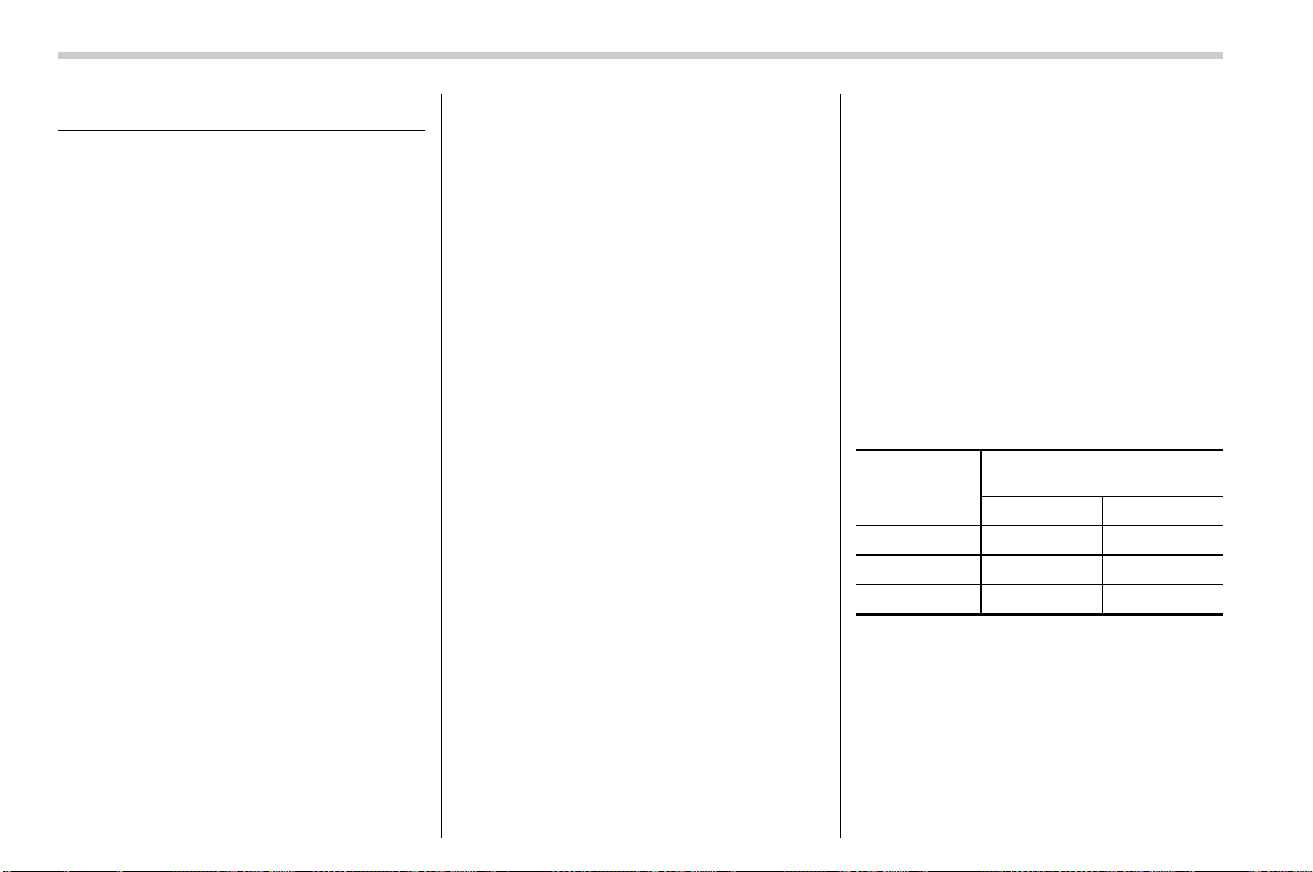Loading ...
Loading ...
Loading ...

(540,1)
北米Model "A2630BE-A" EDITED: 2022/ 12/ 23
11-16. Tires and Wheels
s11av
& Types of Tires
s11av01
You should be familiar with type of tires
present on your vehicle.
The factory-installed tires on your new
vehicle are all season tires.
! All season tires
s11av0101
All season tires are designed to provide an
adequate measure of traction, handling
and braking performance in year-round
driving including snowy and icy road
conditions. However all season tires do
not offer as much traction performance as
winter (snow) tires in heavy or loose snow
or on icy roads.
All season tires are identified by “ALL
SEASON” and/or “M+S” (Mud & Snow) on
the tire sidewall.
! Summer tires
s11av0102
Summer tires are high-speed capability
tires best suited for highway driving under
dry conditions.
Summer tires are inadequate for driving on
slippery roads such as on snow-covered or
icy roads.
If you drive your vehicle on snow-covered
or icy roads, we strongly recommend the
use of winter (snow) tires.
When installing winter tires, be sure to
replace all four tires.
! Winter (snow) tires
s11av0103
Winter tires are best suited for driving on
snow-covered and icy roads. However
winter tires do not perform as well as
summer tires and all season tires on roads
other than snow-covered and icy roads.
& Tire Pressure Monitoring
System (TPMS) (U.S.-Spec.
Models)
s11av02
The tire pressure monitoring system pro-
vides the driver with a warning message by
sending a signal from a sensor that is
installed in each wheel when tire pressure
is severely low. The tire pressure monitor-
ing system will activate only when the
vehicle is driven at speeds above 20 mph
(32 km/h). Also, this system may not react
immediately to a sudden drop in tire
pressure (for example, a blow-out caused
by running over a sharp object).
If you adjust the tire pressures in a warm
garage and will then drive the vehicle in
cold outside air, the resulting drop in tire
pressures may cause the low tire pressure
warning light to illuminate. To avoid this
problem when adjusting the tire pressures
in a warm garage, inflate the tires to
pressures higher than those shown on
the tire inflation pressure label. Specifi-
cally, inflate them by an extra 1 psi (6.9
kPa, 0.07 kgf/cm
2
) for every difference of
108F (5.68C) between the temperature in
the garage and the temperature outside.
By way of example, the following table
shows the required tire pressures that
correspond to various outside tempera-
tures when the temperature in the garage
is 608F (15.68C).
Example:
Tire size: 225/55R17 97V, 225/50R18 95V
Standard tire pressures:
Front: 33 psi (230 kPa, 2.3 kgf/cm
2
)
Rear: 32 psi (220 kPa, 2.2 kgf/cm
2
)
Garage temperature: 608F (15.68C)
Outside
temperature
Adjusted pressure
[psi (kPa, kgf/cm
2
)]
Front Rear
308F (−18C) 36 (250, 2.5) 35 (240, 2.4)
108F (−128C) 38 (265, 2.65) 37 (255, 2.55)
−108F (−238C) 41 (280, 2.8)
39 (270, 2.7)
Example:
Tire size: 225/65R17 102H, 225/60R18
100H, 225/65R17 102T
Standard tire pressures:
Front: 35 psi (240 kPa, 2.4 kgf/cm
2
)
Rear: 33 psi (230 kPa, 2.3 kgf/cm
2
)
Garage temperature: 608F (15.68C)
Tires and Wheels
538
Loading ...
Loading ...
Loading ...